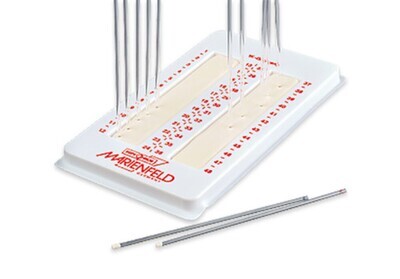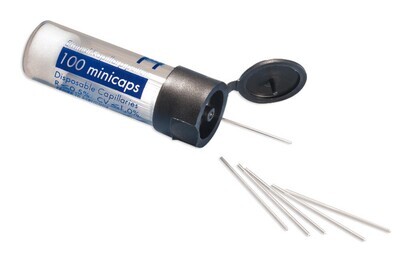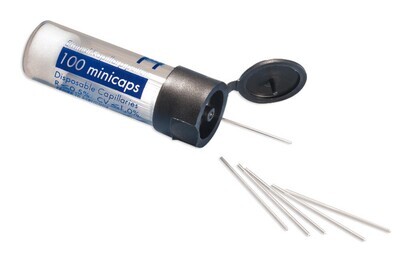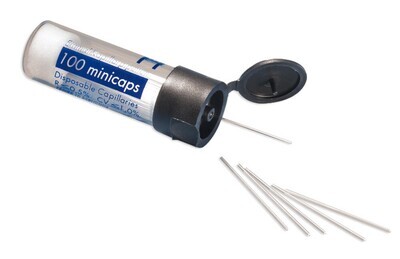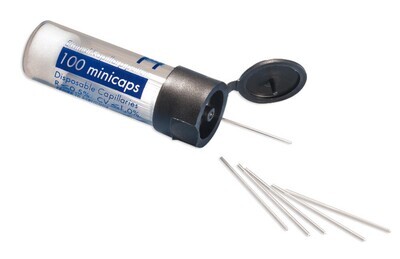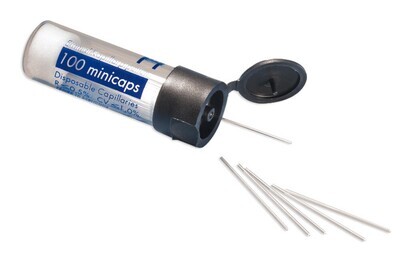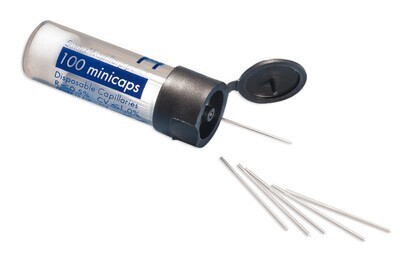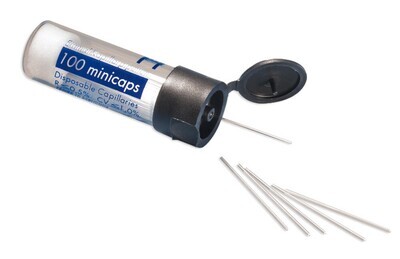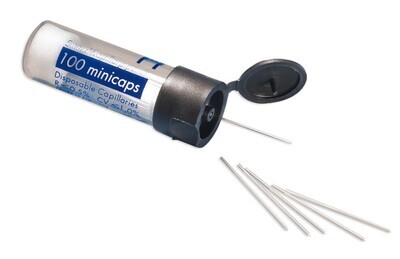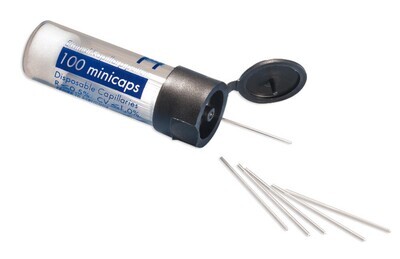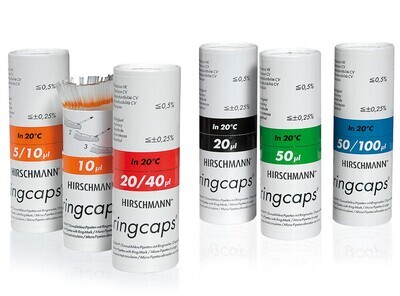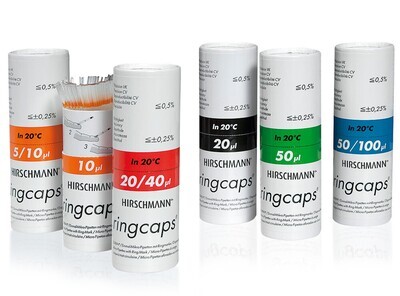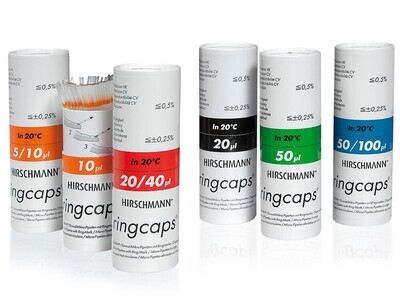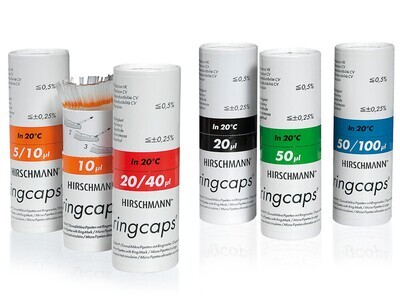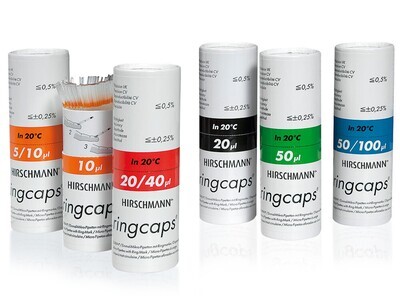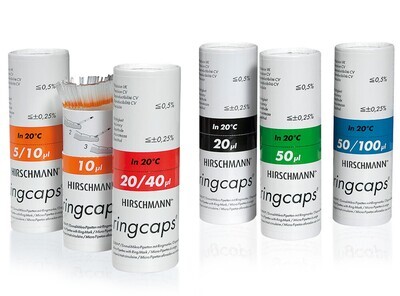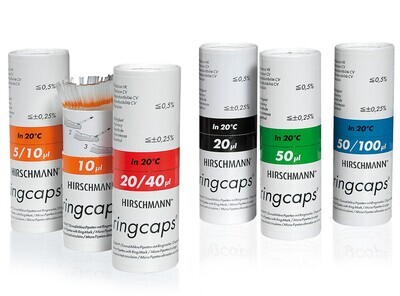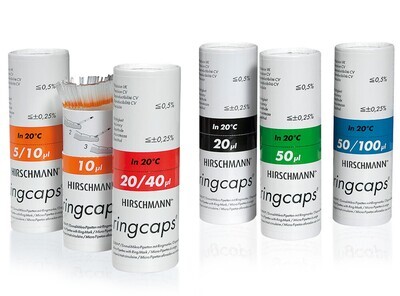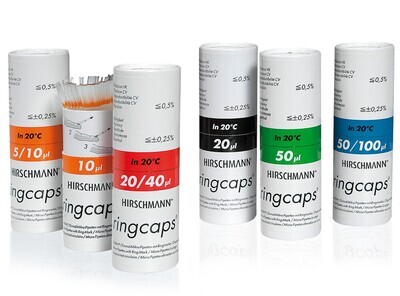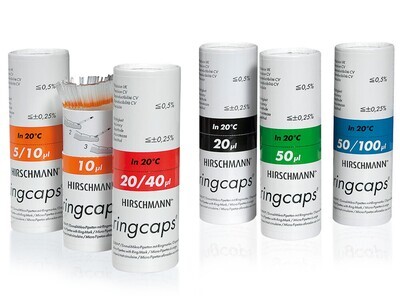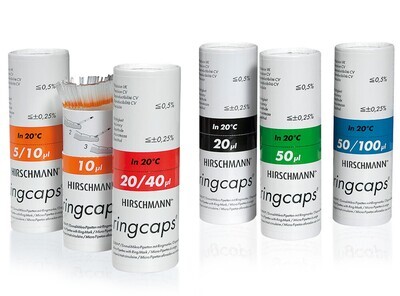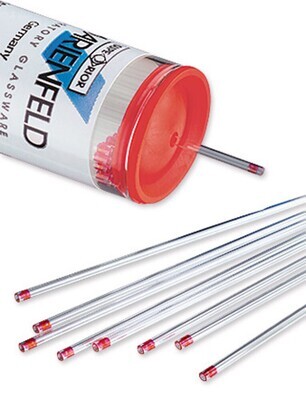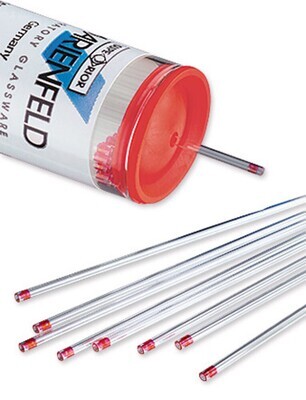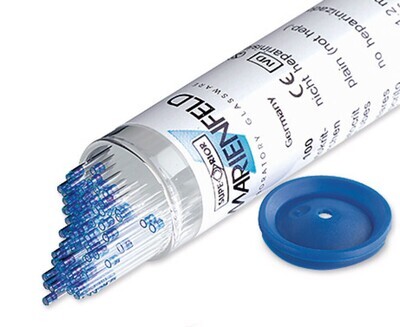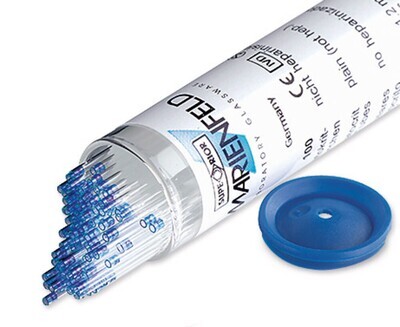Verzending 24–48 u • Levering in de hele EU • Veilige chemieverpakking
Capillary pipettes
Capillary pipettes are essential instruments in laboratories and are used for accurately measuring and transferring small amounts of liquids. These pipettes are designed with a thin, tubular structure that allows capillary action. This means that the liquid is pulled up into the pipette by the forces of surface tension and adhesion. The use of capillary pipettes offers many advantages. First, they provide highly accurate measurement of liquids, even in microliter or nanoliter ranges. This is crucial in laboratories where precision and exact measurements are of great importance. In addition, capillary pipettes are very easy to use and do not require complicated calibration procedures. They are also very cost-effective, making them a popular choice for laboratories with limited budgets. Capillary pipettes are available in different sizes and shapes to meet different needs. They can be made of glass or plastic depending on the requirements of the experiment. Glass pipettes are generally more durable and resistant to chemical reactions, while plastic pipettes are more convenient for single use and reduce the risk of cross-contamination. However, using capillary pipettes requires some skill and precision. It is important to handle the pipette correctly and ensure that there are no air bubbles in the pipette as this can affect the accuracy of the measurement. It is also essential to use proper technique when transferring liquids to avoid spills and loss of samples. When choosing capillary pipettes, it is important to consider the requirements of the experiment and compatibility with the liquids used. For example, some pipettes are specifically designed for working with aggressive chemicals, while others are suitable for biological samples. It is also important to consider the desired accuracy and volume range required for the experiment. In short, capillary pipettes are indispensable instruments in laboratories for accurately measuring and transferring small amounts of liquids. They offer a high degree of precision, are easy to use and cost-effective. With the right technique and careful selection, capillary pipettes can contribute to the success of experiments and analyzes in various scientific disciplines.
Refine by
Display prices in:EUR
